Here’s a guide to just some of the species you can see when snorkelling in Belize.
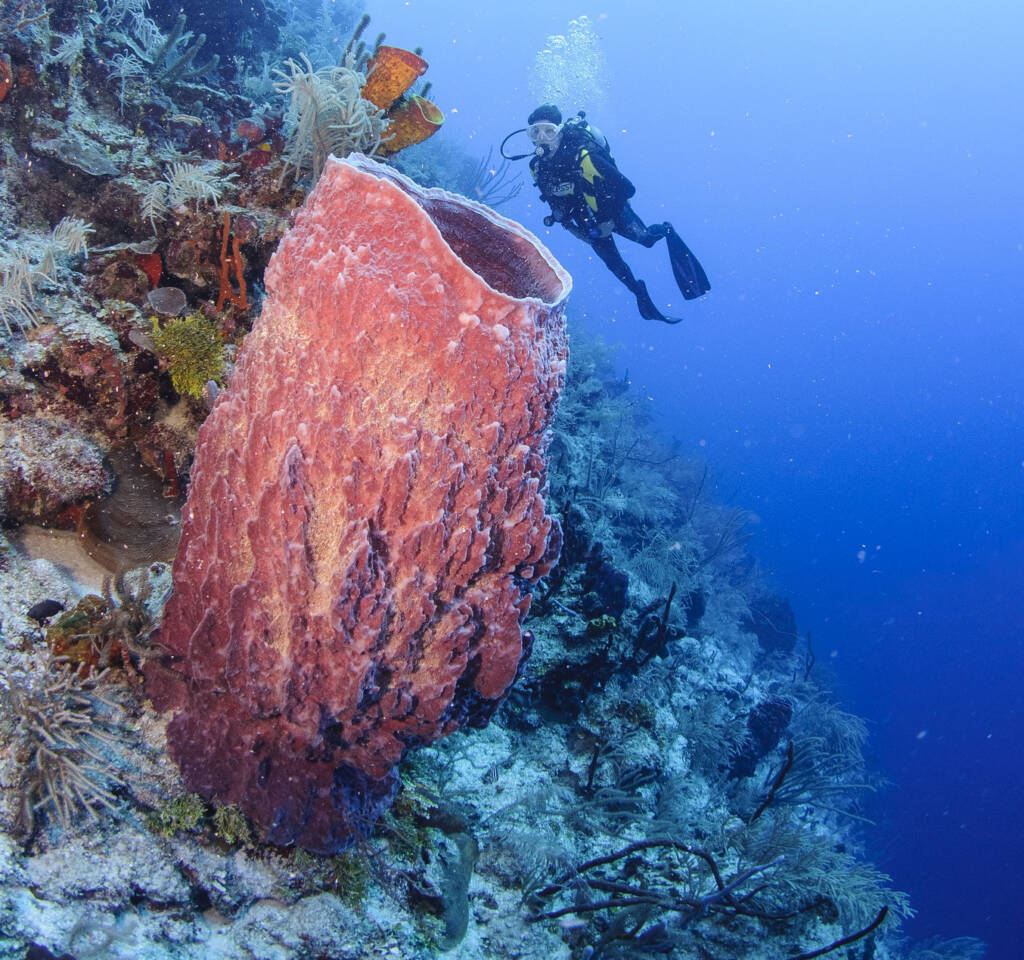
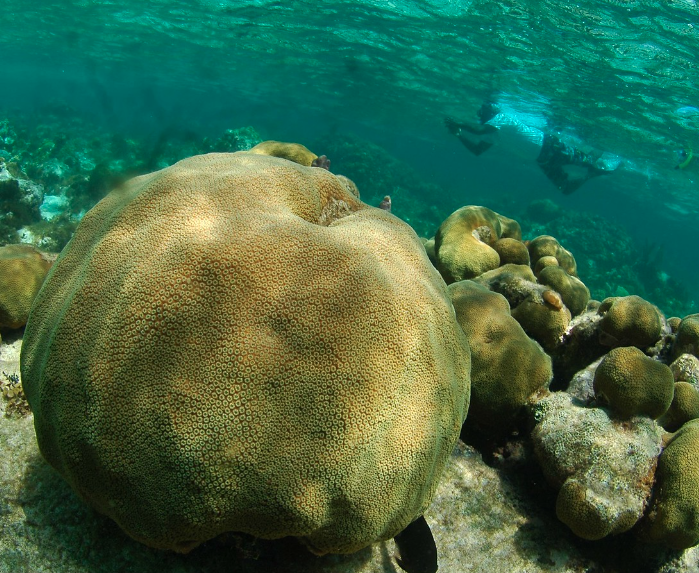
Manta rays are common in Belize. The average Manta ray is about 4.5 meters (15 ft) and is easily identifiable due to its black back and white belly. Spot them lazily gliding through the water feeding on plankton.
Eagle rays are also very common in Belize. In fact, there’s an oceanic wall where they congregate that is named after them: Eagle Ray Wall. They look very similar to Manta rays but they have shiny, polka-dotted backs. Find them in shallow waters near coral reefs.
The most common ray that people encounter in Belize is the Southern Stingray. It’s a bit smaller than Eagle and Manta rays, spanning about 1.5 meters (5 ft). You can recognize the Southern Stingray by its rigid and textured spine and barbed tail.

There are about 159 species of Groupers around the world. Several of them inhabit the waters of Belize.
Nassau Groupers were the most common Grouper in Belize. However, invasive species and hunters threaten their population. Identify a Nassau Grouper by its tan body which has four or five irregular dark brown lines.
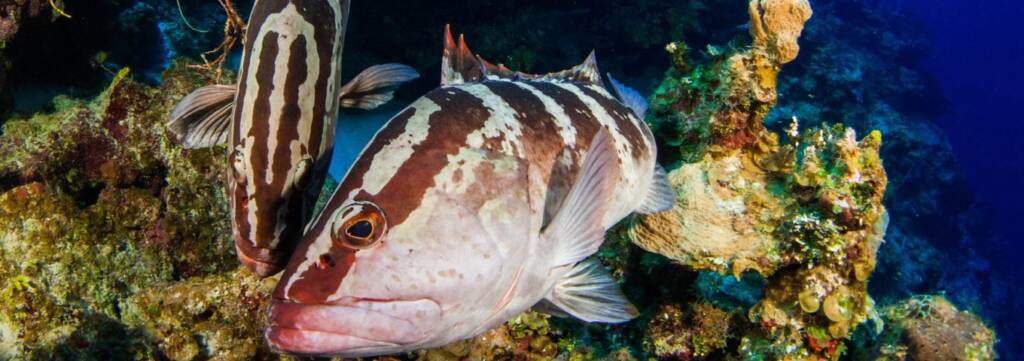
Despite their name, Black Groupers have various colourations which change as they age. Juvenile Black Groupers have blotches of reddish brown and black, while adults are white and a dark blackish colour.
The Red Grouper is easy to recognize with its bright red or brownish colour.
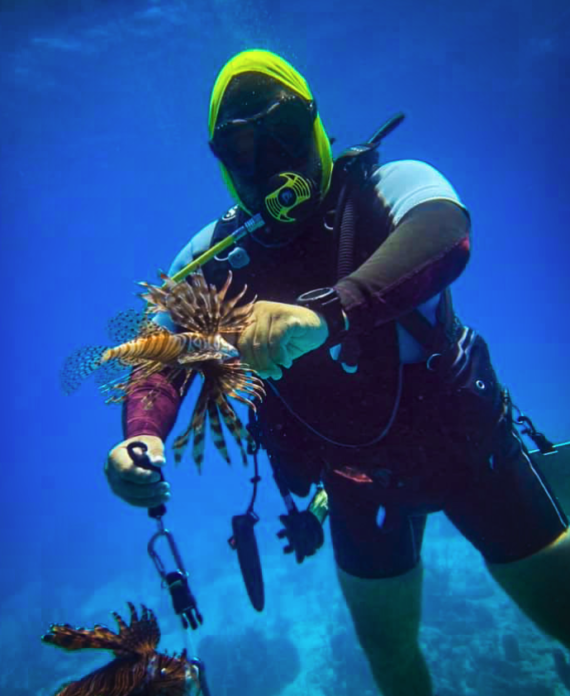
The three most-commonly seen Angelfish in Belize are: Queen Angelfish, French Angelfish, and Gray Angelfish. You can see them while snorkelLing because they often swim in shallow water.
Look for vibrant blue and yellow that’s iridescent. You might also be able to identify them by the rainbow-coloured tips of their fins.
You can identify French Angelfish by their black body, yellow scales, and the yellow ring around their eyes.
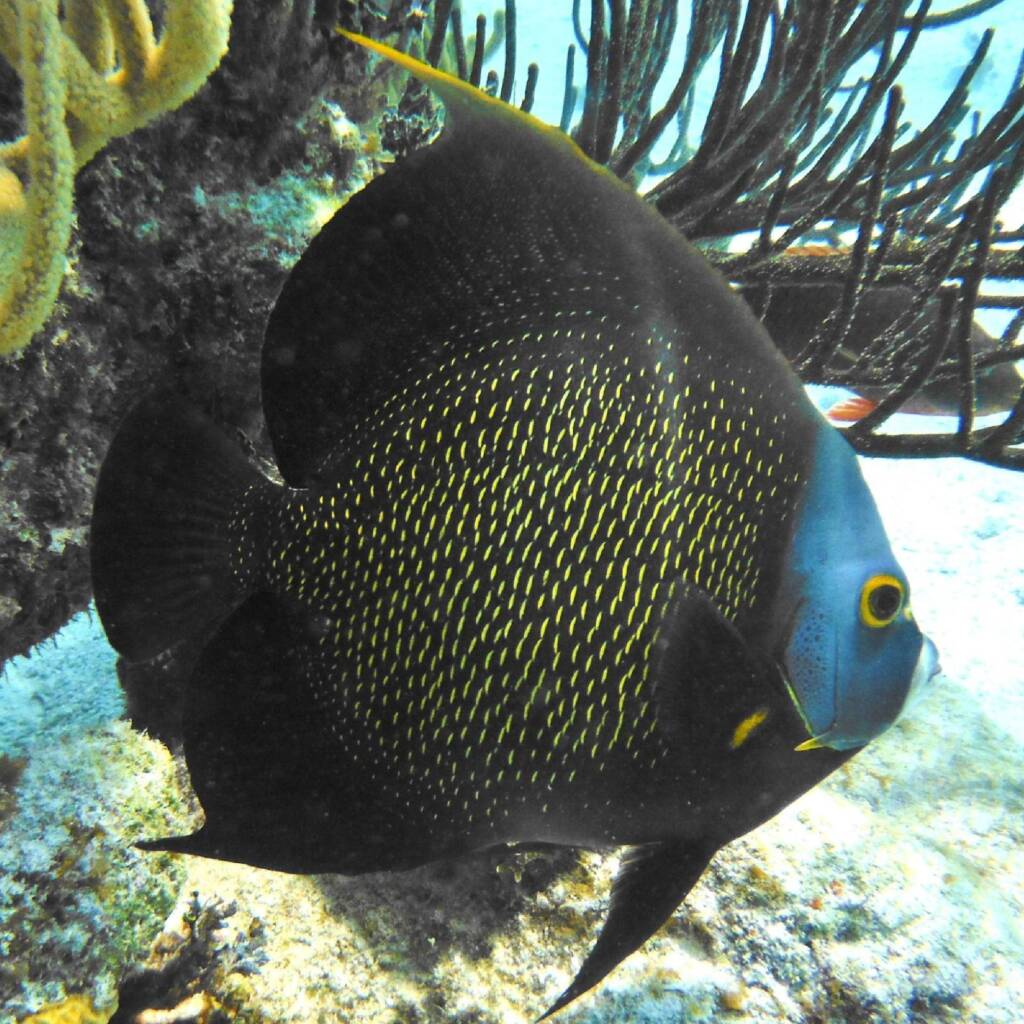
Gray Angelfish are the least colourful of the three. Mature Gray Angelfish are gray and white.
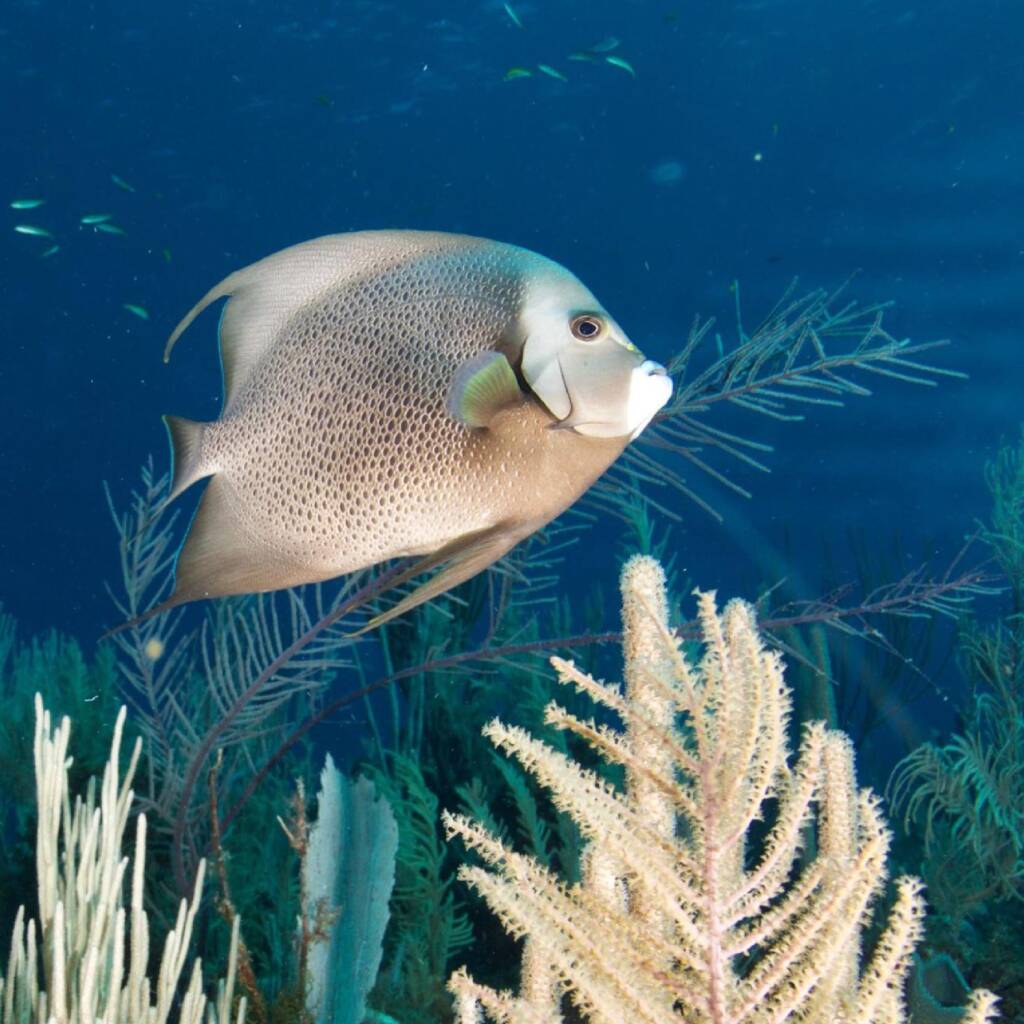
There are a variety of sharks that lurk in the waters around Belize. Nurse sharks have flat heads and can be seen lounging on the ocean floor much of the time.
You might confuse a Reef shark for its cousin, the Great White shark. However, Reef sharks like to swim in the shallow waters around Belize, particularly at night. They can be anywhere from 1.5-3 meters in length (5-10 ft).
Most people know how to identify a Hammerhead shark based on the unique shape of its head. You might get to see one while snorkelling in Belize because they frequent the shallow waters.
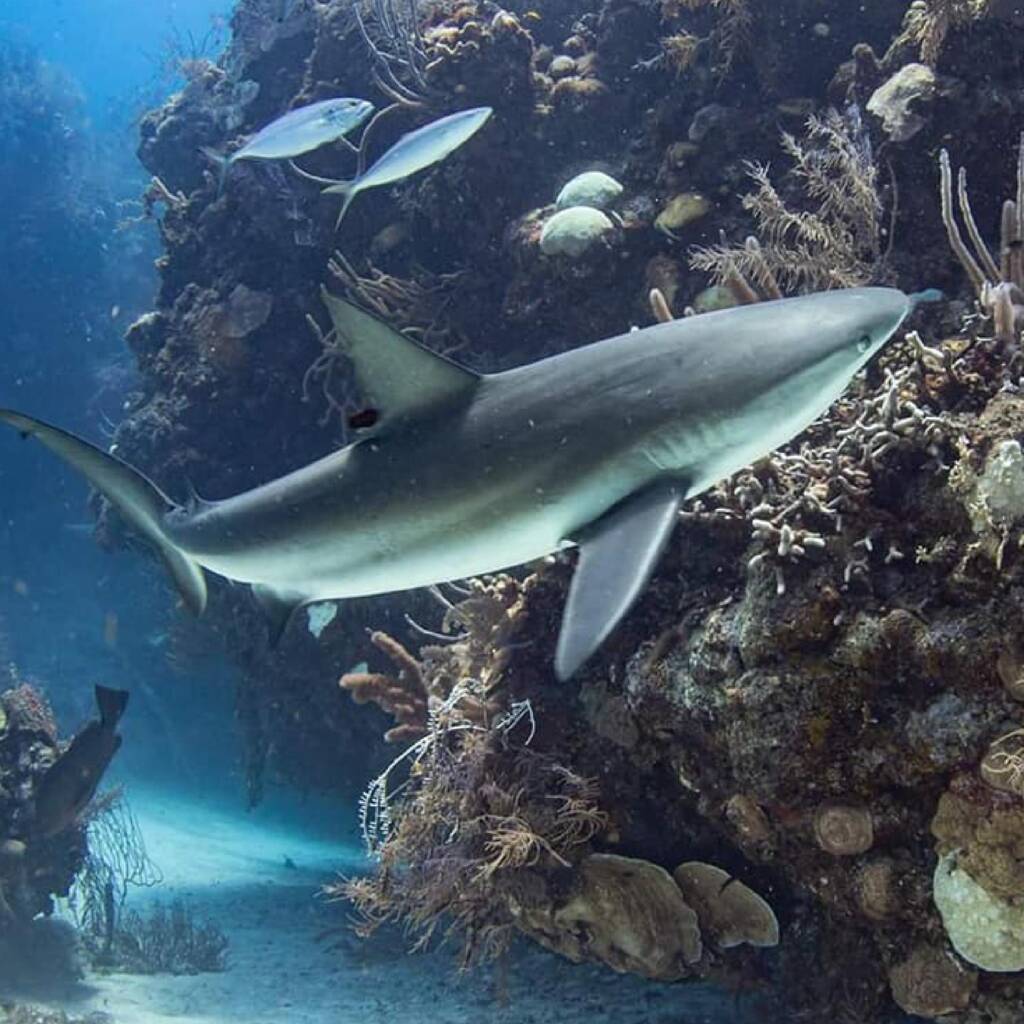
You can identify a Hawksbill turtle by its four overlapping scutes (the boney external plates) on the side of its shell and its hawk-like beak that it uses for fishing and eating.
Another turtle you might encounter while snorkeling or diving in Belize is the Green Sea Turtle. It’s the most common turtle and it’s the easiest to identify – look for its many colours from green to black and gray and brown, and its yellow underside. They’re also very big – 99cm (39 inches) – and can weigh up to 330 lbs (150 kg).
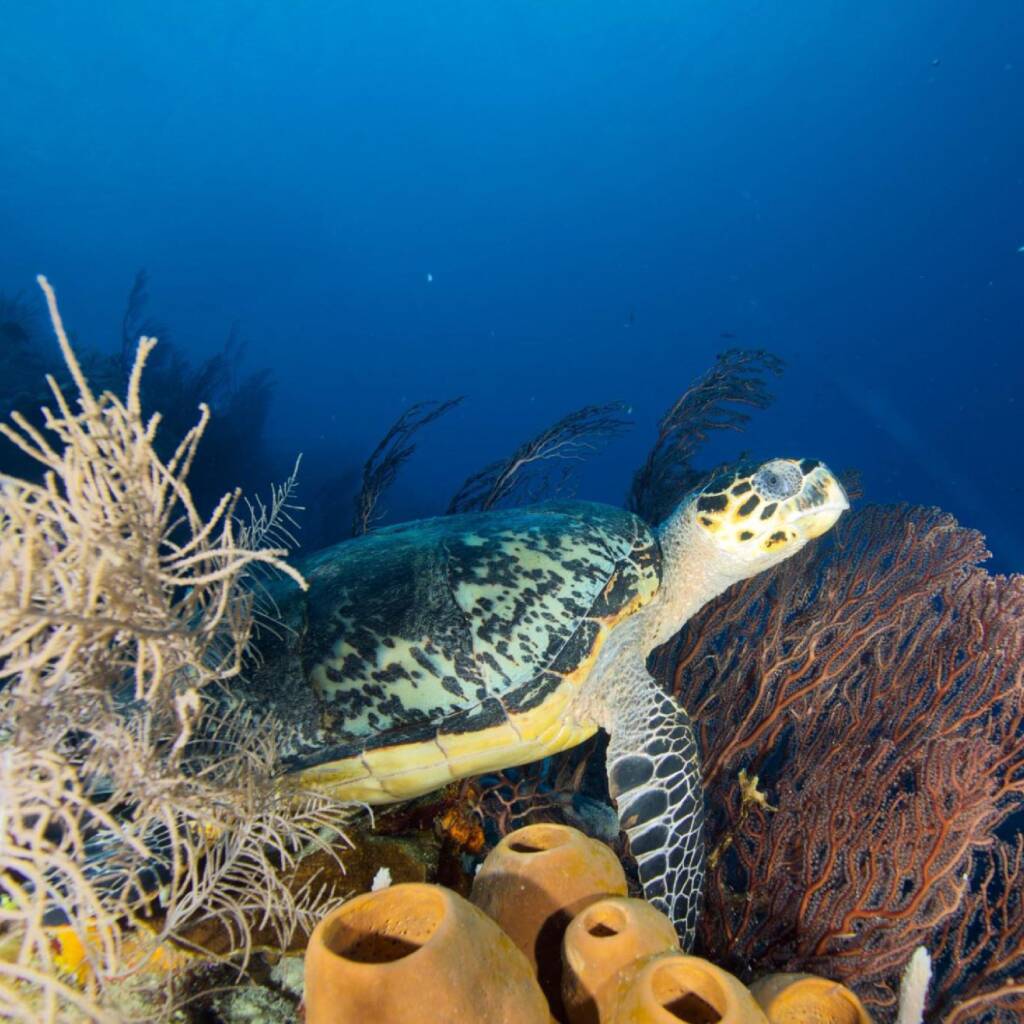
It’s hard to mistake a Manatee for anything else. Since these gentle giants like to swim slowly through the warm, shallow waters of Belize’s coast, you might catch a glimpse of a West Indian Manatee. Look for the round ocean cow that can weigh up to 3,300 lbs and reach lengths of 4 metres (13 ft).
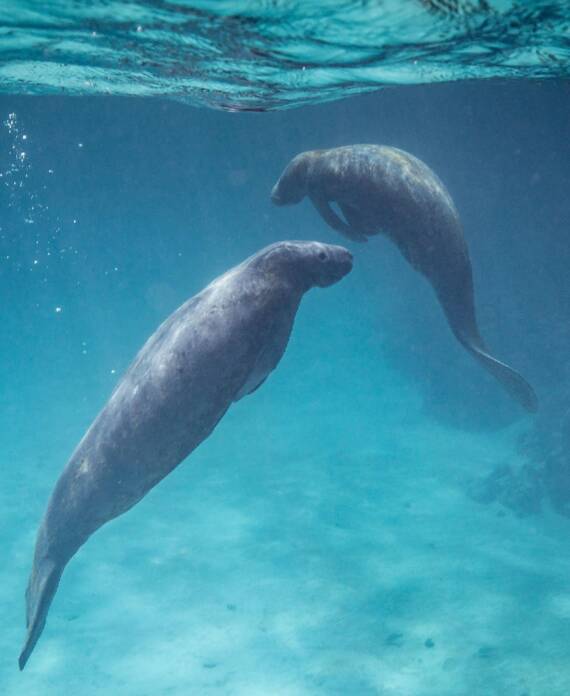
Belize Dive Haven isn’t just for diving. You can book a snorkelling vacation and have a magical time exploring the Belize Barrier Reef and taking photos of and identifying the vast variety of marine life.
Learn more about our snorkelling packages here.
Just 30 miles from Belize City, Belize Dive Haven is located in pristine Turneffe Atoll. Consisting of creeks, lagoons, mangrove islands and cays, the atoll is home to over 500 species of fish, 65 different species of stony corals as well as birds, turtles, manatees and dolphins.
Follow us on Facebook, Instagram, and Twitter to see what our divers and snorkelers get to experience during their Belize vacation.